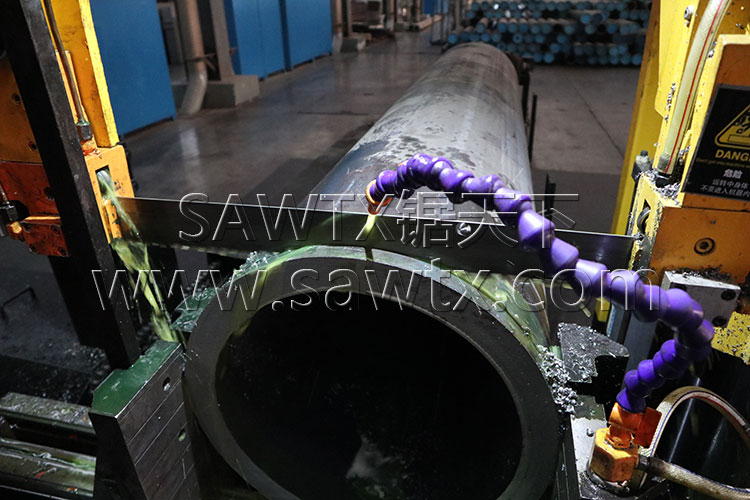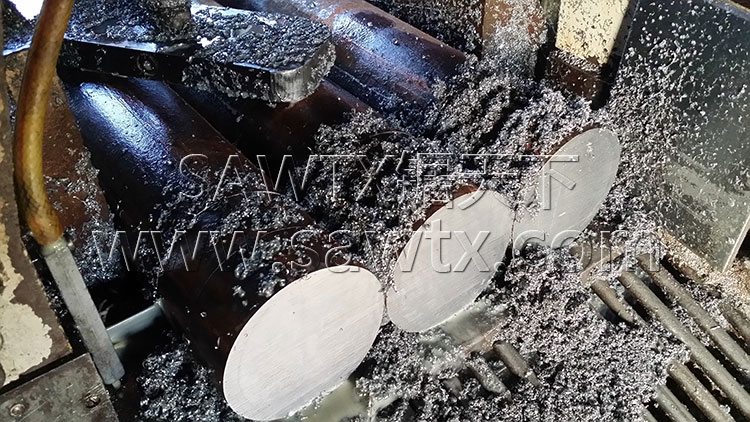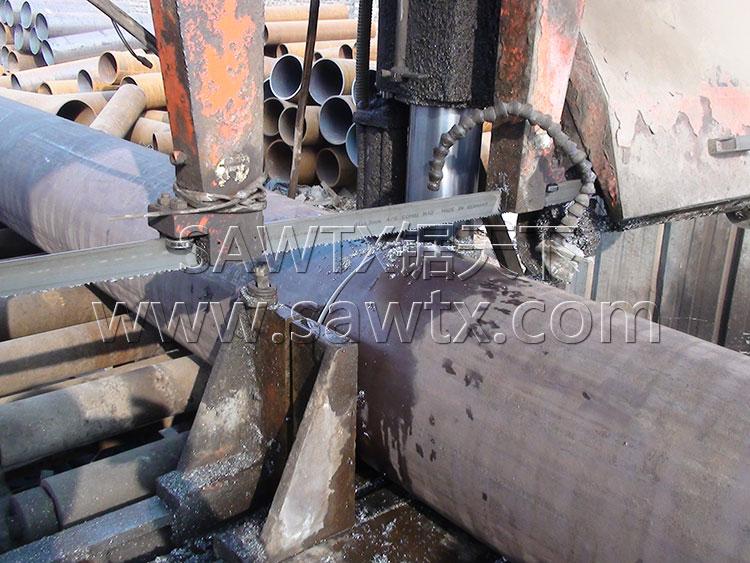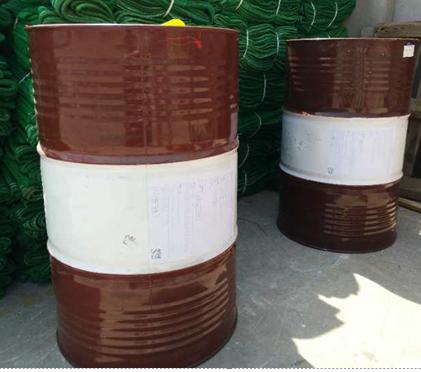Proper use of band saw blades can improve their service life. The following aspects should be noted:
1、Sawing belt speed:
Sawing aluminum and aluminum alloy saw strips at a speed of 79-110 meters per minute
When sawing copper alloy materials, the main workpiece materials are:
Copper band saw maintains a speed of 47-80 meters per minute
Maintain a speed of 50-70 meters per minute for brass and brass band saws
Bronze band saw maintains a speed of 47-67 meters per minute
When sawing carbon steel materials, the main workpiece materials are:
Low carbon steel, easy cutting steel strip saw speed maintained at 69-80 meters per minute
Maintain the saw speed of medium carbon steel strip at 60-75 meters per minute
Maintain the speed of the high carbon steel band saw at 4-59 meters per minute
Sawing alloy structural steel with a band saw speed maintained at 47-69 meters per minute
Sawing tool steel, bearing steel, with a band saw speed maintained at 30-59 meters per minute
When sawing tool steel, the workpiece materials include:
The tool steel band saw maintains a speed of 30-59 meters per minute
High speed tool steel and cold work tool steel strip saw maintain a speed of 30-40 meters per minute
When sawing stainless steel, maintain a band saw speed of 25-39 meters per minute
When sawing hardened stainless steel, maintain a band saw speed of 11-24 meters per minute
When sawing cast iron, maintain a band saw speed of 29-69 meters per minute
When sawing titanium alloy, maintain a band saw speed of 10-29 meters per minute
When sawing nickel alloy, maintain a band saw speed of 12-29 meters per minute

be careful:
The materials shown above are all based on 20HRC (225HB) as an example. When the material hardness is 30HRC (283HB). Adjust the speed to 70% of the above speed. When the hardness is 35HRC (330HB), adjust the speed to 60% of the above speed.
The material dimensions shown above are all based on 100mm as an example. If the size is 60mm, it can be raised by 5%, and if the size is 200mm, it can be lowered by 10%.
The above is the recommended speed for bimetallic band saw blades. If a hard alloy band saw blade is used, the band speed can be adjusted higher.
The data are all suggested belt speeds, and the actual situation may vary depending on external conditions such as sawing machine conditions and actual working conditions.
2、Break in:
A saw blade that has not been run in or has poor run in has a lifespan that is one-third or even less of a well run in saw blade. This is because the new unused saw blade has extremely sharp serrations. If the new saw blade is used at a high cutting speed and feed rate from the beginning, the impact of the workpiece on the tooth tip will cause minor damage between the teeth. This type of tooth tip loss caused by non wear will result in severe early wear, skewing, and tooth breakage of the tooth tip, leading to early failure of the saw blade and greatly reducing its service life. Therefore, we strongly recommend that you use the correct method to break in the new saw blade.
The service life of a band saw blade is closely related to proper running in when the blade is first used.
The following running in conditions are appropriate: after determining the normal cutting speed and correct number of teeth, start sawing with 70% of the normal cutting speed and 50% of the normal feed. After sawing an area of approximately 400 to 600cm², the speed and feed can gradually increase to normal.

3、Guiding arm:
The guiding arm should be as close as possible to the workpiece. On the one hand, reducing the vibration during sawing can make the saw blade run more smoothly, and the sawing accuracy and flatness of the sawing surface can be effectively improved; On the other hand, increasing the distance between the guide arm and the saw wheel can reduce the torsional stress of the saw blade and increase its fatigue life.
The worn guide block can cause serious damage to the saw blade, and in severe cases, it can lead to the blade breaking, greatly reducing its service life. Therefore, we suggest that you regularly check the wear of the guide block and replace it in a timely manner.
4、Wire brush:
If the wire brush cannot effectively remove the iron filings stuck on the saw blade, it is necessary to adjust or replace the wire brush in a timely manner.
5、Sawing wheel:
If the saw wheel is severely worn, it will have a serious impact on the lifespan of the saw blade. Therefore, it is necessary to regularly check the wear of the saw wheel. To remove sawdust residue around the saw wheel.
6、Tension of saw blade:
If the tension of the saw blade is too low, it will cause the saw blade to run unevenly, intensify the vibration of the saw blade, and easily cause cutting skewness. Excessive tension in the saw blade can greatly reduce its fatigue life and make it very prone to cracking. Choosing the correct saw blade tension can not only ensure smooth cutting and reduce vibration, but also ensure the fatigue life of the saw blade and reduce the probability of blade cracking. We recommend that you use the SAWTX saw world tension measuring instrument.

7、Workpiece:
Ensuring workpiece clamping can greatly reduce the vibration during sawing, ensuring smooth sawing, and reduce the occurrence of cutting skewness. Especially for bundled or bundled workpieces, it is necessary to ensure three-way clamping.
8、Cutting fluid:
Choosing high-quality cutting fluid and using it correctly can effectively reduce cutting force, lower cutting temperature, take away sawdust to protect the saw blade, and greatly improve the service life of the saw blade. We suggest that you ensure the normal circulation of cutting fluid during sawing and ensure that the cutting fluid flows fully into the incision.



 Your location:
Your location:








 Home
Home Consult
Consult Products
Products
